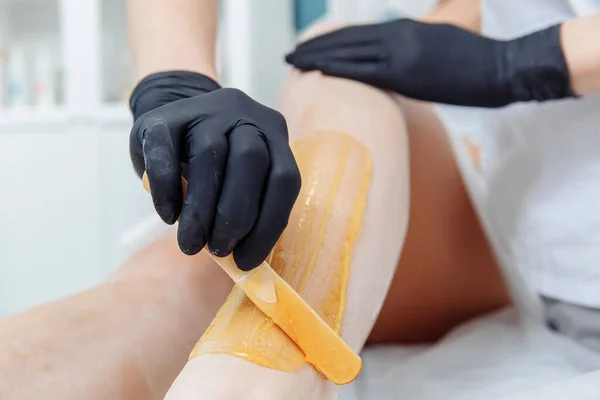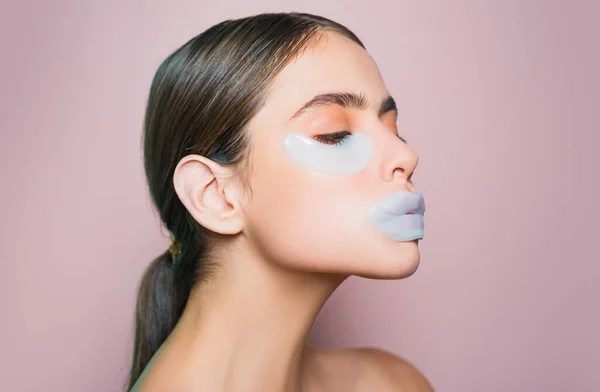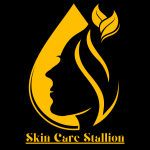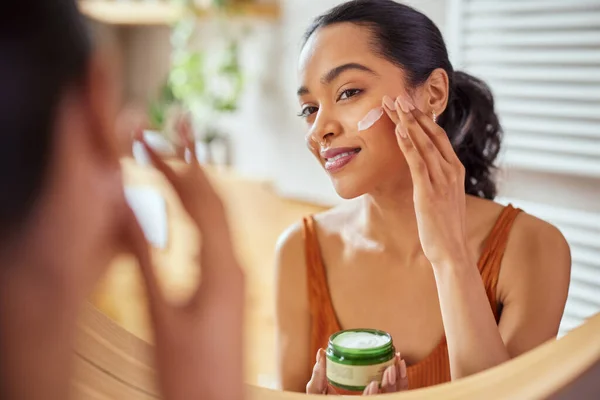How to apply skincare: Begin with a gentle cleanser to remove impurities and prepare your skin for treatment.
Unlock the secrets to radiant skin with our ultimate guide on “How to Apply Skincare.” In a world where flawless complexions are coveted, mastering the art of skincare application is your ticket to a glowing, youthful appearance.
Whether you’re a beauty novice or a seasoned aficionado, this comprehensive guide will demystify the process, ensuring each step enhances your natural beauty.
Get ready to transform your daily routine into a luxurious ritual that nourishes not just your skin, but your soul. Dive in and discover the transformative power of perfect skincare application!

How To Apply Skincare
Applying skincare involves a series of steps tailored to your skin type to ensure optimal results. Cleanse your face, use a toner, apply serums, moisturize, and protect with sunscreen.
Following a consistent routine is key. Always choose products suited for your skin type, whether dry, oily, or combination. Here’s a detailed guide on how to apply skincare effectively.
Cleansing
Cleansing is the foundation of any skincare routine. It removes dirt, oil, and impurities that accumulate on your skin throughout the day. Use a gentle cleanser suitable for your skin type whether it’s a foaming, gel-based, or creamy cleanser.
Massage the cleanser into your skin using circular motions to enhance blood circulation and ensure a thorough clean. Rinse with lukewarm water, as hot water can strip your skin of its natural oils, leading to dryness and irritation.
Toning
Toning helps balance your skin’s pH levels and prepares it for better absorption of subsequent products. Choose an alcohol-free toner to avoid stripping your skin of essential moisture. Apply the toner using a cotton pad or simply pat it into your skin with your hands.
This step can also help minimize pores and refresh your skin, providing a clean slate for your serums and moisturizers.
Serum Application
Serums are concentrated treatments that address specific skin concerns such as aging, hyperpigmentation, or acne. They contain active ingredients like hyaluronic acid, vitamin C, and retinol.
Apply a few drops of serum to your face and gently press it into your skin, allowing it to penetrate deeply. Serums are potent, so a little goes a long way, ensuring maximum benefits without overwhelming your skin.
Moisturizing
Moisturizing is crucial for maintaining skin hydration and protecting the skin barrier. Select a moisturizer that matches your skin type lightweight gels for oily skin and richer creams for dry skin.
Apply the moisturizer in upward, gentle strokes to promote firmness and avoid tugging at your skin. Moisturizers help seal in all the previous layers of skincare, ensuring your skin remains supple and nourished.
Sun Protection
Sunscreen is a non-negotiable part of any skincare routine. It protects your skin from harmful UV rays, preventing premature aging, sunburn, and skin cancer. Opt for a broad-spectrum sunscreen with at least SPF 30.
Apply it generously to all exposed areas of your skin, and reapply every two hours if you’re spending time outdoors. Sunscreen should be the final step in your morning skincare routine to shield your skin from daily sun exposure.
Additional Tips
Exfoliating once or twice a week can help remove dead skin cells and promote cell turnover, leaving your skin radiant and smooth. Always patch-test new products to avoid adverse reactions.
Stay hydrated and maintain a balanced diet to support your skincare routine from the inside out. Regularly clean your makeup brushes and pillowcases to prevent bacteria build-up that can lead to breakouts.

Preparing Your Skin
Cleansing
Importance of Cleansing
Cleansing is crucial for maintaining healthy skin. It removes dirt, oil, and impurities, preventing clogged pores and acne. Regular cleansing keeps your skin fresh and vibrant.
Choosing the Right Cleanser for Your Skin Type
Selecting a suitable cleanser ensures effective results. For oily skin, opt for a foaming cleanser to control excess oil. Dry skin benefits from hydrating, creamy cleansers. Sensitive skin requires gentle, fragrance-free products.
Steps for Effective Cleansing
Begin with warm water to open pores. Apply the cleanser in circular motions, focusing on trouble areas. Rinse with cool water to close pores, and gently pat dry with a clean towel.
Exfoliation
Benefits of Exfoliation
Exfoliation removes dead skin cells, promoting cell turnover. This process reveals smoother, brighter skin and enhances the absorption of skincare products.
Types of Exfoliants (Physical vs. Chemical)
Physical exfoliants use grains or beads to manually slough off dead skin. Chemical exfoliants, like AHAs and BHAs, dissolve dead skin cells without abrasion. Both types offer unique benefits.
How Often to Exfoliate
Exfoliate 1-3 times a week, depending on your skin type and exfoliant strength. Over-exfoliating can cause irritation, so monitor your skin’s reaction.
Techniques for Safe Exfoliation
Use gentle, circular motions with physical exfoliants. For chemical exfoliants, follow product instructions carefully. Avoid exfoliating broken or inflamed skin to prevent damage.
Toning
Purpose of Toner
Toners balance skin’s pH, remove residual impurities, and prepare skin for moisturizing. They can also hydrate and soothe, depending on the formula.
Selecting a Toner for Your Skin Type
For oily skin, choose an astringent toner with ingredients like witch hazel. Dry skin benefits from hydrating toners containing hyaluronic acid. Sensitive skin needs alcohol-free, soothing toners with ingredients like chamomile.
Application Methods
Apply toner with a cotton pad, gently sweeping it over your face. Alternatively, pat toner into your skin using clean hands for better absorption. Use toner daily after cleansing and before moisturizing.
Applying Skincare Products
Order of Application
Importance of Layering Products Correctly
Proper layering of skincare products is crucial for maximizing their effectiveness. Each product serves a specific function and needs to be absorbed correctly. Misapplication can lead to reduced benefits and potential irritation.
General Order of Skincare Application
Cleanser
Start with a gentle cleanser to remove dirt, oil, and makeup. Cleansing is the foundation of any skincare routine.
Exfoliant
Use an exfoliant to slough off dead skin cells, promoting smoother skin and better product absorption.
Toner
Apply toner to balance your skin’s pH and prepare it for subsequent treatments.
Serums
Serums are potent and targeted treatments for specific skin concerns. Apply them after toner for maximum absorption.
Eye Cream
Eye creams address delicate skin around the eyes, helping with puffiness, dark circles, and fine lines.
Moisturizer
Lock in hydration with a moisturizer. It helps to seal in all the previous layers.
Serums and Treatments
Benefits of Serums
Serums are concentrated with active ingredients. They target specific skin concerns such as hydration, anti-aging, and brightening. Their small molecules penetrate deeply, delivering powerful results.
Types of Serums
Hydrating Serums
Infused with hyaluronic acid to boost moisture.
Anti-Aging Serums
Contain retinoids or peptides to reduce fine lines and wrinkles.
Brightening Serums
Often include vitamin C to even skin tone and reduce dark spots.
How to Apply Serums
Apply a few drops of serum to clean, toned skin. Gently press and pat the serum into your skin for better absorption.
Eye Cream
Importance of Eye Cream
Eye creams are formulated to tackle issues like puffiness, dark circles, and fine lines. The skin around the eyes is thinner and more delicate, requiring specialized care.
Choosing the Right Eye Cream
Select an eye cream based on your specific needs—look for ingredients like caffeine for puffiness, peptides for wrinkles, and vitamin C for brightening.
Application Techniques
Use your ring finger to apply a small amount of eye cream. Gently tap around the orbital bone without pulling or tugging the skin.
Moisturizing
Role of Moisturizer in Skincare
Moisturizers help maintain the skin’s moisture barrier, preventing dryness and protecting against environmental damage.
Different Types of Moisturizers
Gels
Lightweight and ideal for oily or acne-prone skin.
Creams
Thicker and suited for dry or mature skin.
Lotions
Generally lighter than creams, suitable for normal to combination skin.
Application Methods
Apply moisturizer to slightly damp skin to lock in hydration. Use upward, circular motions to gently massage it into your face.

Additional Skincare Tips
Face Masks
Benefits of using face masks
Face masks provide deep cleansing, hydration, and targeted treatment for skin concerns. They can brighten the complexion, unclog pores, and deliver concentrated ingredients for quick results.
Types of face masks
There are various types of face masks including clay, sheet, and peel-off masks. Clay masks are great for absorbing oil and impurities. Sheet masks offer intense hydration and nutrient infusion. Peel-off masks help remove dead skin cells and impurities from the surface.
How often to use face masks
For optimal results, use face masks 1-2 times a week. Overuse can lead to irritation, so it’s important to follow the recommendations based on your skin type and the mask’s ingredients.
Face Oils
Benefits of face oils
Face oils nourish the skin, lock in moisture, and provide essential fatty acids. They can improve skin texture, reduce inflammation, and enhance the skin’s natural barrier.
How to incorporate face oils into your routine
Add face oils as the last step in your nighttime routine. This ensures that all other products are sealed in, maximizing their effectiveness.
Best practices for application
Use a few drops of face oil, warming it between your palms. Gently press the oil into your skin, focusing on areas that need extra hydration. Avoid excessive rubbing to prevent irritation.
Spot Treatments
Purpose of spot treatments
Spot treatments are designed to target specific skin issues like acne and hyperpigmentation. They deliver high concentrations of active ingredients to problem areas for faster results.
Types of spot treatments
There are various types including acne spot treatments with benzoyl peroxide or salicylic acid, and hyperpigmentation treatments with ingredients like niacinamide or vitamin C.
Application tips
Apply spot treatments after cleansing and before moisturizing. Use a small amount directly on the affected area. Avoid using all over the face to prevent dryness or irritation.
Understanding Active Ingredients
Common active ingredients
Popular active ingredients include retinoids, vitamin C, and hyaluronic acid. Retinoids help with cell turnover and anti-aging. Vitamin C brightens the skin and fights free radicals. Hyaluronic acid provides intense hydration.
Benefits and considerations for each ingredient
Retinoids can improve fine lines but may cause initial irritation. Vitamin C brightens but can be unstable. Hyaluronic acid hydrates without feeling heavy but needs to be used with a moisturizer.
How to incorporate active ingredients into your routine
Introduce active ingredients gradually. Start with lower concentrations and increase as your skin builds tolerance. Always follow with sunscreen in the morning to protect your skin.
Special Considerations
Skincare for Sensitive Skin
Identifying Sensitive Skin
Sensitive skin often reacts to products with redness, itching, or burning. Common signs include dryness, frequent rashes, and irritation from environmental factors. Understanding these symptoms helps in choosing appropriate skincare routines.
Choosing Gentle Products
Opt for products labeled hypoallergenic, fragrance-free, and designed for sensitive skin. Ingredients like aloe vera, chamomile, and oatmeal are soothing. Avoid alcohol, sulfates, and harsh exfoliants to prevent irritation.
Application Tips for Minimizing Irritation
Apply products gently with your fingertips, avoiding vigorous rubbing. Patch test new products on a small skin area before full application. Use lukewarm water and limit your skincare routine to essential steps like cleansing, moisturizing, and sun protection.
Skincare for Aging Skin
Common Concerns for Aging Skin
Aging skin often faces wrinkles, fine lines, and loss of elasticity. Other issues include dryness, uneven skin tone, and age spots. Identifying these concerns is crucial for effective skincare.
Anti-Aging Ingredients and Products
Look for products containing retinoids, hyaluronic acid, and peptides. Vitamin C and E are powerful antioxidants that combat free radicals. Moisturizers with ceramides and glycerin help maintain skin hydration.
Best Practices for Application
Apply anti-aging products in a thin layer, focusing on problem areas. Use upward strokes to lift the skin and avoid pulling it downward. Incorporate a broad-spectrum SPF to protect against further sun damage.
Skincare for Acne-Prone Skin
Causes of Acne
Acne can be caused by excess oil production, clogged pores, bacteria, and hormonal changes. Stress and diet also play a role. Recognizing these factors helps in tailoring your skincare routine.
Acne-Fighting Ingredients
Ingredients like salicylic acid, benzoyl peroxide, and tea tree oil are effective for treating acne. Niacinamide and retinol can help reduce inflammation and prevent future breakouts. Non-comedogenic products are essential to avoid clogging pores.
Routine Adjustments for Managing Acne
Cleanse twice daily with a gentle, non-comedogenic cleanser. Use acne treatments consistently, and moisturize to maintain skin balance. Avoid over-exfoliating, as it can irritate the skin and worsen acne.
Common Skincare Mistakes to Avoid
Over-exfoliating
Signs of Over-exfoliation
Over-exfoliating can damage your skin barrier. Common signs include redness, irritation, and increased sensitivity. Your skin might feel tight and dry. You may also notice peeling or flaking.
How to Avoid and Remedy It
Limit exfoliation to 1-2 times per week. Choose gentle exfoliants suitable for your skin type. To remedy over-exfoliated skin, use soothing products with ingredients like aloe vera or hyaluronic acid. Moisturize regularly and avoid harsh treatments until your skin recovers.
Using the Wrong Products for Your Skin Type
Consequences of Mismatched Products
Using the wrong products can worsen skin issues. Oily skin may become more acne-prone, while dry skin can become irritated and flaky. Mismatched products can lead to breakouts, redness, and discomfort.
How to Identify the Right Products
Determine your skin type oily, dry, combination, or sensitive. Look for products specifically designed for your skin’s needs. Conduct research or consult a dermatologist. Read labels for ingredients that match your skin’s requirements.
Skipping Sunscreen
Risks of Not Using Sunscreen
Skipping sunscreen increases the risk of sunburn, premature aging, and skin cancer. UV rays can damage your skin even on cloudy days. Sun exposure without protection accelerates wrinkles and sunspots.
Strategies for Consistent Use
Choose a broad-spectrum sunscreen with at least SPF 30. Apply it daily, even on cloudy or indoor days. Reapply every two hours when outdoors. Incorporate sunscreen into your morning routine to ensure consistent use.
Ignoring Patch Testing
Importance of Patch Testing New Products
Patch testing prevents adverse reactions. It helps identify allergies and sensitivities before applying a product to your entire face. Ignoring this step can lead to breakouts, rashes, or irritation.
How to Properly Patch Test
Apply a small amount of the product on your inner forearm or behind your ear. Wait 24-48 hours and observe for any reaction. If no irritation occurs, the product is likely safe to use on your face. Repeat this process for each new product.
Building a Personalized Skincare Routine

